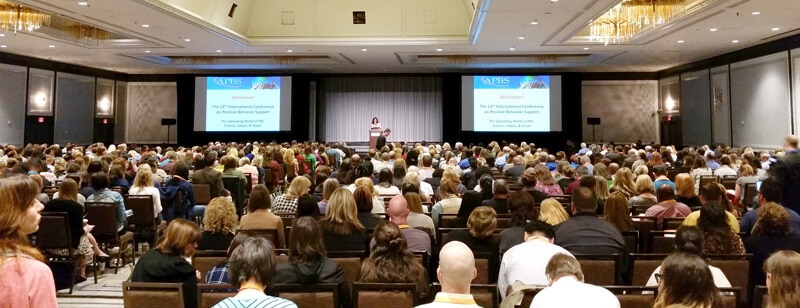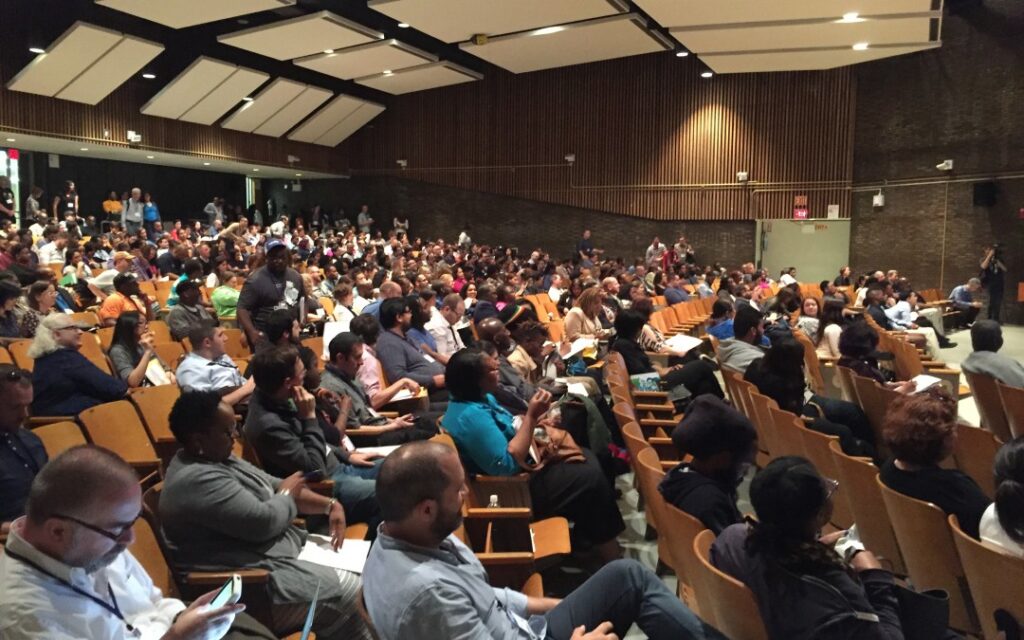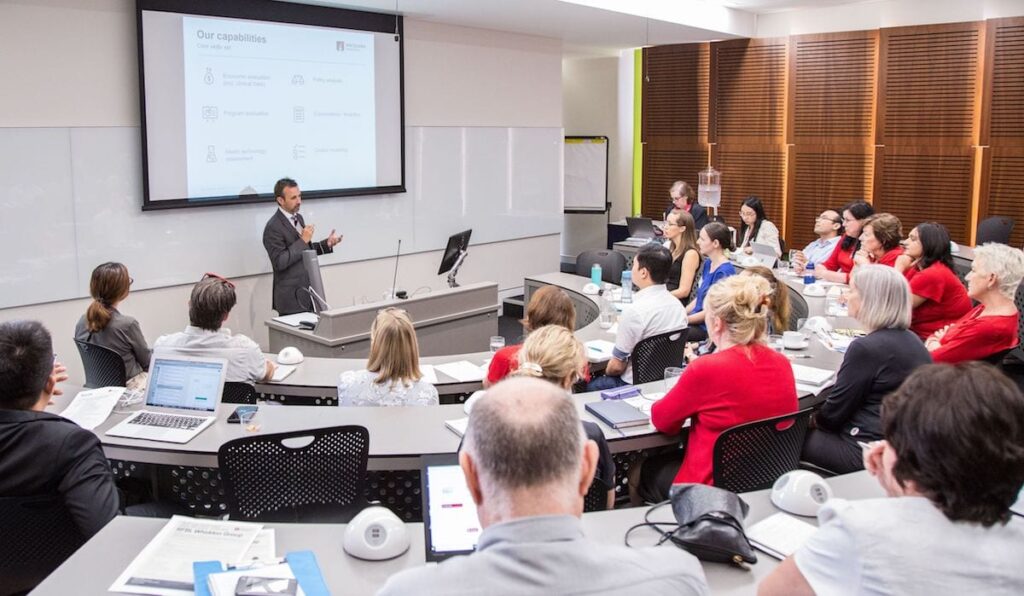We explain how to hold a conference at your educational center.
A conference is the presentation of an expert on a topic of interest to a specific audience. They usually address booming topics and can have the participation of one or more people, as well as be face-to-face or online.
Technology has allowed the use of visual supports, such as images or videos, in order to strengthen the exposition of the expert and bet on a more dynamic discourse that maintains the interest of the attendees.
It is difficult to imagine an educational institution that does not organize conferences, whether they are aimed at the general public or for students and parents.
A good advice is to take advantage of your professors to give lectures, especially when they are for the external public. In this way, the talent that your educational center has will be perceived.
Another good way to promote your institution is by hiring prominent personalities to give conferences at your facilities, so your students will reinforce their learning by listening to other voices and, incidentally, you can attract potential clients.
Types of conferences for educational centers

They are those taught by highly recognized people in certain subjects. Keynote addresses may have academic or marketing objectives.
Press conference
They serve to inform the media about a topic of news interest that involves the school.
Video conference
It is a presentation by an expert through technological tools, such as a computer or telephone, either live or recorded.
Conferences for academic purposes
In these cases, a conference will have the mission of expanding knowledge and promoting reflection on a problem with a presentation by a speaker and through interaction with the attendees. They are used to exchange ideas and discuss an issue.
Coordinator of the Health area at ICEL University, points out that these talks “are a great exchange of knowledge; They give the opportunity to speakers and students to share experiences and learning, especially current ones. It’s like giving science a bit of mobility and giving the chance to whoever wants to learn. “
Giving this benefit to your students will impact their satisfaction, since you are not only fulfilling your promise of education in the classroom, but also reinforcing their knowledge, which will help exceed the expectations of your educational service.
You can use an access form for a virtual conference, in order to generate new leads. When you organize a talk, make sure to define strategic topics that are interesting for the audience you want to reach: parents, high school graduates, university students, etc.
Conferences for the positioning of educational brands
A high-impact conference, with a great personality and a topic of great interest, can position your educational center among the academic and intellectual sector.
If the activity is successful, you will generate press releases and stand out among the competition, it could even be a determining factor for the consumer to decide on your center.
If you have an interesting topic and your speaker is a well-known character, you could charge the entrance fee and that money would be used to recover the investment or capitalize on future activities.
On the other hand, if your faculty is projected as great speakers, their success will also mean a benefit for your institution.
Ideal structure for a conference
This is a basic but very effective outline that can help you plan the development of your conference.
Presentation of the speaker
Include educational background and professional achievements. The presentation should not be long.
Exposure of the theme
I advise setting a duration; it is best not to exceed 40 or 50 minutes. It is not necessary for the presenter to speak to himself all the time, since he can incorporate debate and questions at some point, regardless of whether there is time for it in the end.
Questions and Answers session
Consider one or more microphones for the participants (it will depend on the space) and the number of questions that will be received. Another form of organization is, before the conference, to make a list of those who want to participate in this stage.
Steps to organize conferences in schools
Like any other event, conferences require good logistics and careful prior planning.
These are the most important steps in your organization:
1. Define objectives
Before anything it is important to know why we are organizing the event. If we are not clear about the goal we want to achieve, it is most likely that the activity does not make sense or use.
2. Set a budget
How much money will it cost to carry it out? Who will make the investment? Will there be sponsors?
Nothing is free in this life. Free events for a school do not exist, there will always be a minimum need for resources for any activity.
3. Select the topic and confirm the speaker
If the conference has an objective and the budget is known, defining the theme and the speaker will be an easier task.
4. Select the right place to do it
Schools usually have auditoriums or conference rooms, but you could also rent spaces outside the institution that offer greater capacity or better equipment.
5. Make a list with all the requirements
List the equipment you have and if you should get more things, such as microphones, screen, whiteboard, projector, among others. If the conference is online, select through which platform you will broadcast and what you need for it.
Not all requirements are technical, there are also human requirements. Define how many support people you will need, make an organization chart and define roles and responsibilities. Make sure that each person on the team knows in detail the functions that they must perform.
6. Schedule your event promotion
The conferences require a minimum promotion time of 2 weeks, especially when they have a cost of attendance.
Never organize express events that will make your school look unorganized.
7. Do a dress rehearsal a few days before the conference
This will help you avoid errors and detect unforeseen requirements. An unsupervised and unrehearsed conference can lead you into difficult situations that could affect the image of your school.
“Organizing a face-to-face conference implies a lot of synchrony in time, enough time in advance to ensure the participation of all those involved, seeking order and always keeping the participants interested.
The same happens with virtuality, with a little more risk that at some point the public will get lost, so synchrony of themes and times is very important, ”explained Silva Méndez.
8. Measure and evaluate results
Once the conference has been held, the results must be measured, depending on the objective that was set at the beginning.
If it is an academic matter, possibly the control is done by the number of attendees and measuring their level of satisfaction with the talk.
If you have a commercial objective, it will require measurements focused on leads, subscribers and the reach that was had on social networks.
I also recommend doing self-criticism exercises among all the people who participated in the organization. It is very effective to know what we did well and what we should improve for our next activity.


